Sumo!During my previous trip, I got into sumo. The winter tournament was ongoing when I returned to Tokyo, after my excursion to Singapore and Malaysia, and the fights were on TV during hotel check-in time. After a bit of watching, given some idle time on my last full day, I decided to head over to the Kokugikan stadium in Ryogoku to experience the sport first-hand. I enjoyed it so much, I scheduled my arrival this time towards the end of this year's winter tournament. There's only six basho, or Grand Tournaments, held each year: three in Tokyo, one in Osaka, and the other two float around. The basho lasts for two weeks. The wrestlers (or rikishi) go at it from 9 or 10AM until 6PM, with the matches increasing in rank and importance as the day goes on. Only the last two hours are televised. As you approach the Kokugikan you start to notice how you've entered sumo territory. 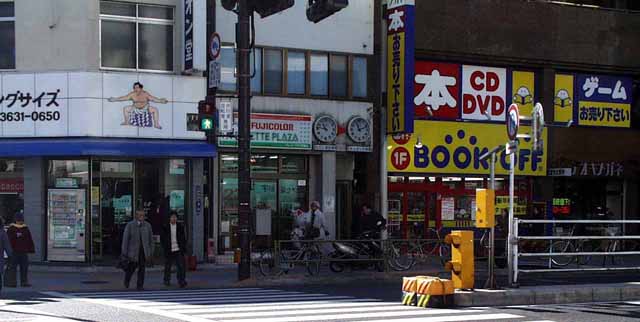 Last trip I posted this next scene, from a different angle, but that day was rainy and overcast -- here's the tower outside the Kokugikan again, with the colorful banners in all their glory. 
Here's a couple shots of sumo wrestling:
Notice the pseudo-roof over the dohyo -- it emulates
a shinto shrine, and the big tassles mark the
The rules are simple: to win a sumo bout, the rikishi must push his opponent out of the ring (or dohyo or cause any part of his body to touch the dohyo. Sitting around the dohyo are five judges, in formal black kimono. They may over-rule the referee's decision, or order a rematch. The referees are called gyoji -- they're wearing kimono like the samurai wore during the Kamakura period. Gyojii rank can be determined by the color of their fan's tassel, as well as their foot-gear: higher ranks wear straw zori sandals and split-toed tabi socks, while lower ranks go barefoot. Their high-pitched voice is specially trained (they do that to be heard easily above the crowd) and their head-gear is modeled after a shinto priest's. (Imagine an American boxing ref wearing the pontiff's miter... these quasi-religious trappings are why I find this sport intriguing.) The best part of the basho are the dohyo-iri, the colorful 'entering the ring' ceremonies. Each rikishi appears as his name is called, until the full east or west team is arrayed in a circle, facing outward, displaying their colorful kesho-mawashi (ceremonial aprons). 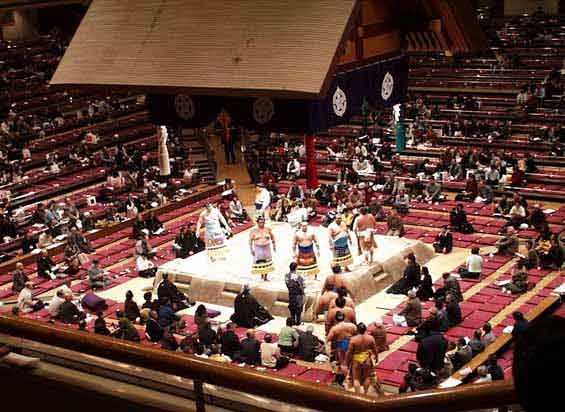 When they're all are present, completing the circle, they all do an about-face. As one, they all lift their kesho-mawashi slightly (in a kind of a curtsy), clap their hands, turn to the right, and then file out. The other team then repeats this performance. The rikishi are only arbitrarily divided into east and west groups -- they do not compete as teams nor is a rikishi from one team necessarily matched against one or the other. 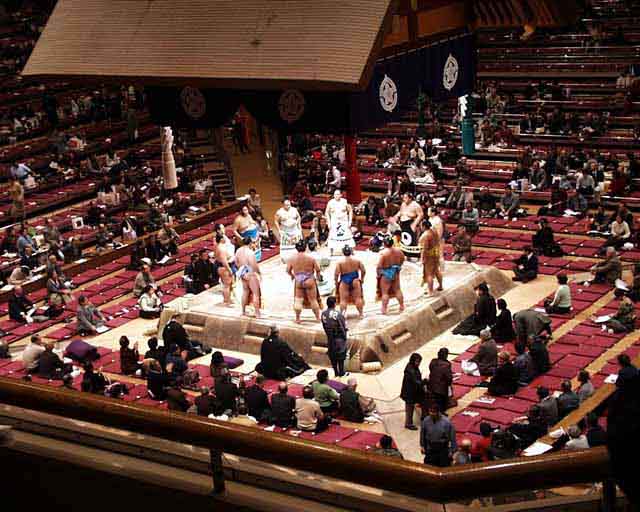 They only wear their special kesho-mawashi for ceremonies; during fights they just wear the standard mawashi loincloth, which is made of heavy silk. Those ornamental strings attached to the front are stiffened with glue, and are frequently discarded as they become detached during the course of a match.
A few more sumo facts:
While the basho's on, you can see a lot of rikishi in the
Ryogoku neighborhood. And once they've had their match, no
reason for 'em to stick around -- these two just left the Kokugikan.
More sumo info:
|
|
Other sections of this site:
Weblog-Home - More Words - Links - Misc - Contact |
Next: Nara |

|
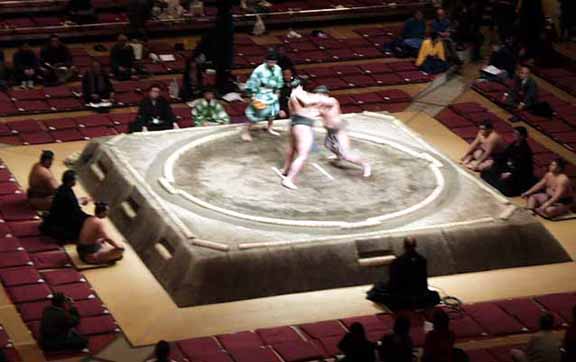
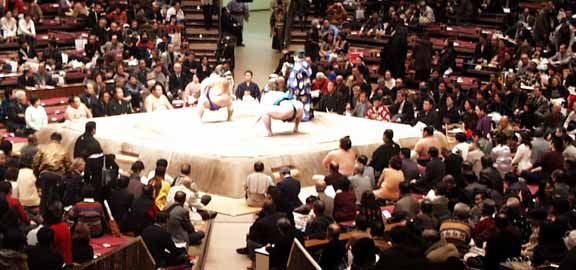
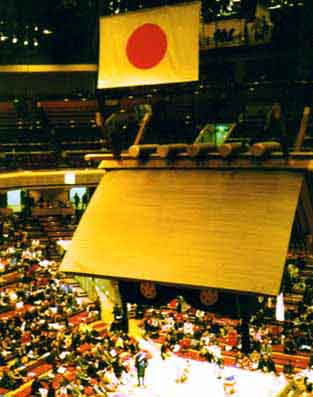 directions of the compass. (This photo's the only on here from
my previous visit.)
directions of the compass. (This photo's the only on here from
my previous visit.)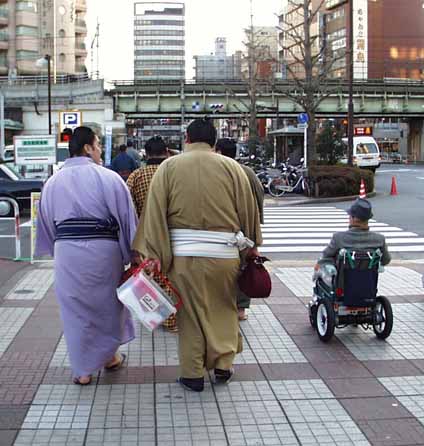
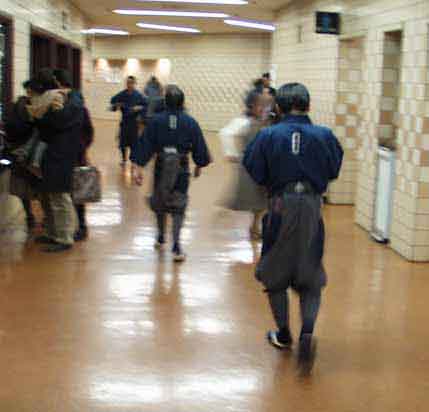
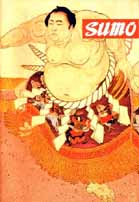 A lot of the details listed on this page are quoted from the
"Sumo" booklet which they give foreigners, when you buy your
ticket (general admission is currently ¥2100, about $20).
The guy on the cover (as well as the one up in that first pic)
is a Grand Champion, or Yokozuna -- you can tell
because his kesho-mawashi has the massive, braided
hemp shimenawa rope, decorated with white
zig-zag gohei streamers, just like Shinto
shrines on New Year's.
A lot of the details listed on this page are quoted from the
"Sumo" booklet which they give foreigners, when you buy your
ticket (general admission is currently ¥2100, about $20).
The guy on the cover (as well as the one up in that first pic)
is a Grand Champion, or Yokozuna -- you can tell
because his kesho-mawashi has the massive, braided
hemp shimenawa rope, decorated with white
zig-zag gohei streamers, just like Shinto
shrines on New Year's.